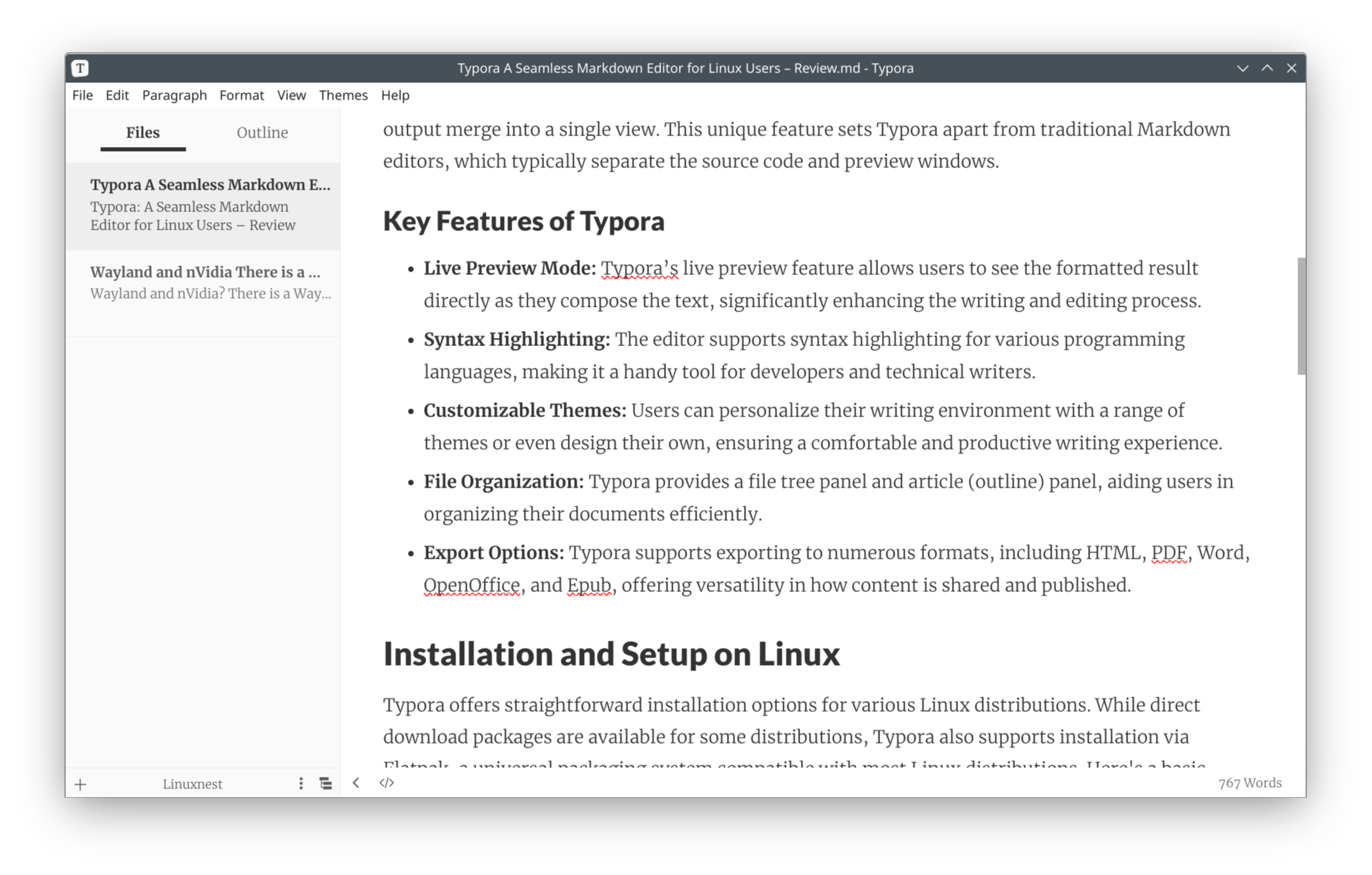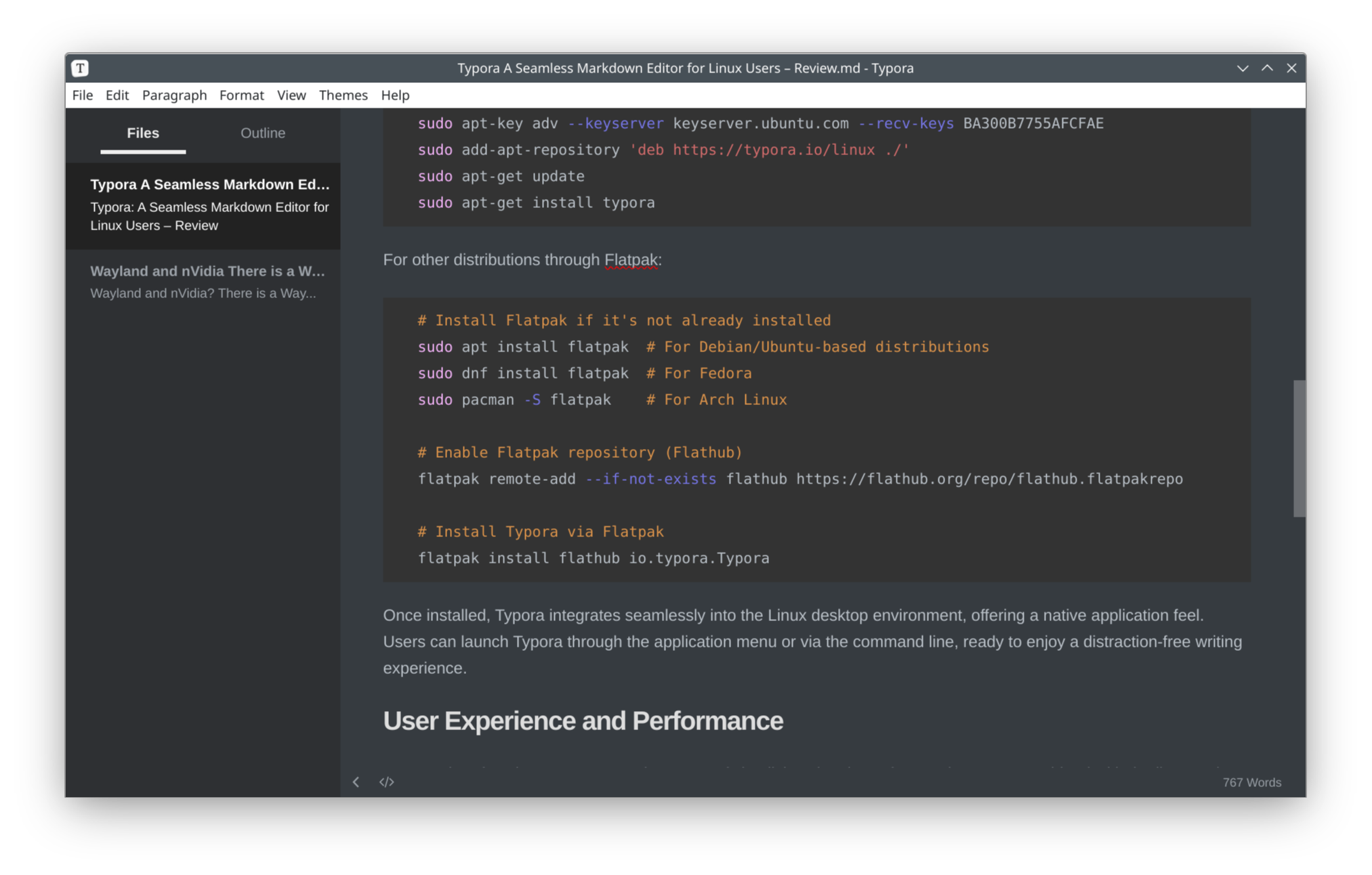Typora: A Seamless Markdown Editor for Linux Users – Review

Linux enthusiasts and professionals are always on the lookout for tools that streamline their workflows and enhance productivity. Typora, a minimalistic yet powerful Markdown editor, emerges as a significant contender in this realm. In this article, we delve into the features and functionalities of Typora from a Linux user's perspective, highlighting its strengths, potential areas for improvement, and how it fits into the Linux ecosystem.
Introduction to Typora
Typora is a cross-platform Markdown editor designed to provide a seamless writing experience. It's renowned for its "distraction-free" interface, where the Markdown source code and the rendered output merge into a single view. This unique feature sets Typora apart from traditional Markdown editors, which typically separate the source code and preview windows.

Key Features of Typora
- Live Preview Mode: Typora’s live preview feature allows users to see the formatted result directly as they compose the text, significantly enhancing the writing and editing process.
- Syntax Highlighting: The editor supports syntax highlighting for various programming languages, making it a handy tool for developers and technical writers.
- Customizable Themes: Users can personalize their writing environment with a range of themes or even design their own, ensuring a comfortable and productive writing experience.
- File Organization: Typora provides a file tree panel and article (outline) panel, aiding users in organizing their documents efficiently.
- Export Options: Typora supports exporting to numerous formats, including HTML, PDF, Word, OpenOffice, and Epub, offering versatility in how content is shared and published.

Installation and Setup on Linux
Typora offers straightforward installation options for various Linux distributions. While direct download packages are available for some distributions, Typora also supports installation via Flatpak, a universal packaging system compatible with most Linux distributions. Here's a basic guide on installing Typora on a Linux system:
Ubuntu and Debian-based systems
sudo apt-key adv --keyserver keyserver.ubuntu.com --recv-keys BA300B7755AFCFAE
sudo add-apt-repository 'deb https://typora.io/linux ./'
sudo apt-get update
sudo apt-get install typora
Other distributions through Flatpak
Install Flatpak if it's not already installed
sudo apt install flatpak # For Debian/Ubuntu-based distributions
sudo dnf install flatpak # For Fedora
sudo pacman -S flatpak # For Arch Linux
Enable Flatpak repository (Flathub)
flatpak remote-add --if-not-exists flathub https://flathub.org/repo/flathub.flatpakrepo
Install Typora via Flatpak
flatpak install flathub io.typora.Typora
Once installed, Typora integrates seamlessly into the Linux desktop environment, offering a native application feel. Users can launch Typora through the application menu or via the command line, ready to enjoy a distraction-free writing experience.
User Experience and Performance
Typora's interface is a testament to the power of simplicity. The clutter-free environment, combined with the live preview feature, ensures that users can focus entirely on their writing. The performance on Linux is commendable, with smooth operation and minimal resource consumption, aligning well with the efficiency ethos of Linux systems.
Customizability and Themes
Linux users appreciate customization, and Typora delivers on this front. The editor offers a variety of themes, and for those inclined to tweak their environment further, the option to modify CSS files for a personalized theme is an added bonus. This level of customization ensures that Typora can visually integrate into any desktop environment or personal preference.

Typora for Coding and Technical Documentation
For developers and technical writers, Typora's code block feature is a standout. The syntax highlighting supports a wide array of programming languages, and the ability to integrate code seamlessly within documents is invaluable. However, while Typora handles most Markdown elements with grace, users dealing with very complex tables or deeply nested lists might encounter limitations.
Typora's Place in the Linux Ecosystem
Typora is not just another text editor; it's a tool that complements the Linux philosophy of efficiency and customization. It caters to a wide audience, from content creators and bloggers to developers and technical writers, making it a versatile tool in the Linux user’s arsenal.
Conclusion
Typora stands out as a refined, user-friendly Markdown editor that resonates well with the Linux user base. Its blend of simplicity, performance, and customization options makes it a compelling choice for anyone looking to streamline their writing process. While it excels in many areas, like any software, it has its limitations and may not fit every specific advanced use case. However, for the majority of Markdown editing tasks, Typora offers an excellent balance of functionality and ease of use.
As the Linux community continues to evolve, tools like Typora that embrace the principles of efficiency and customization will undoubtedly play a significant role in shaping user workflows. Whether you’re drafting technical documentation, composing a blog post, or jotting down notes, Typora is definitely worth considering.

Comments ()